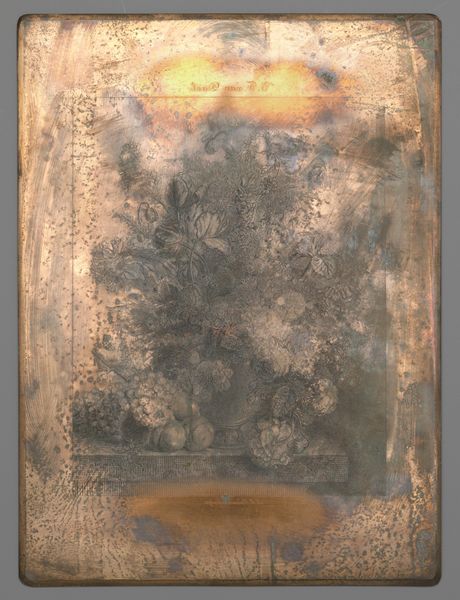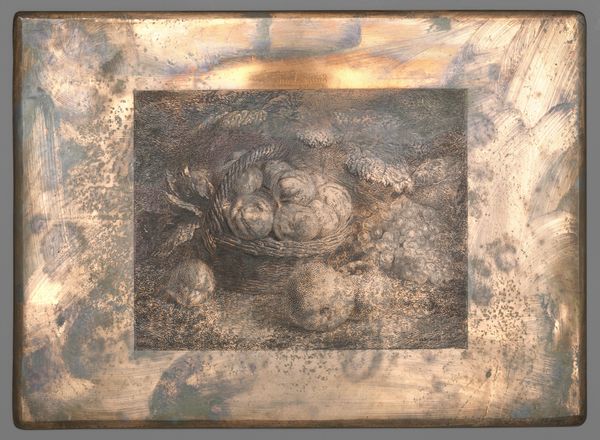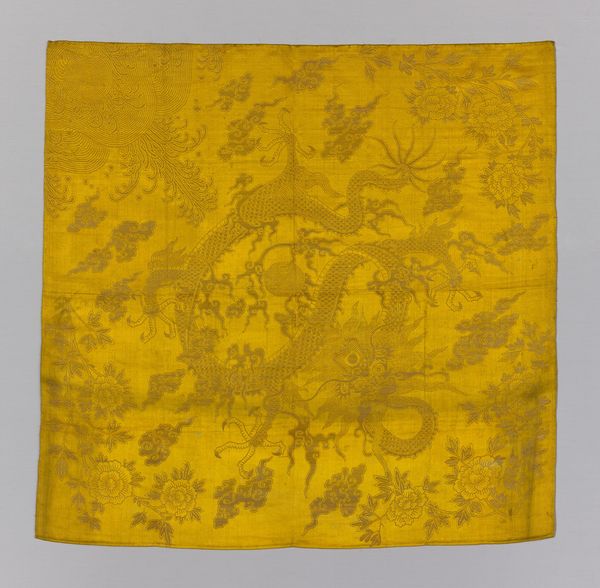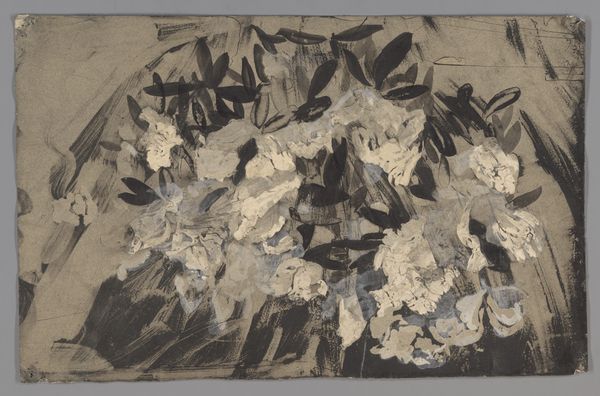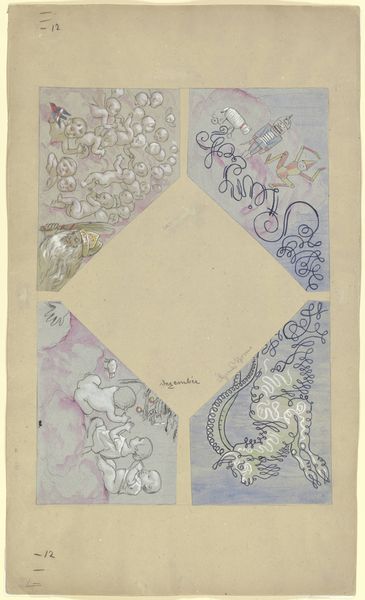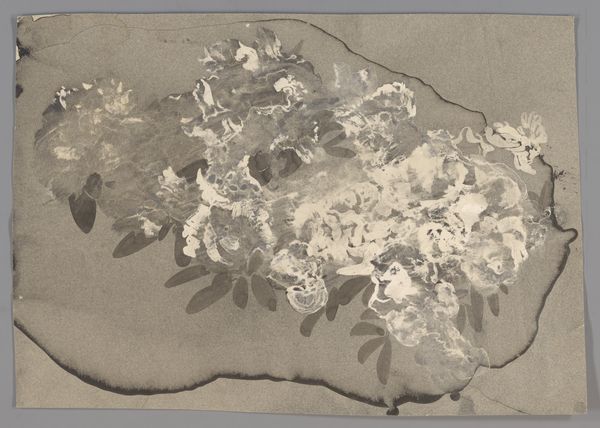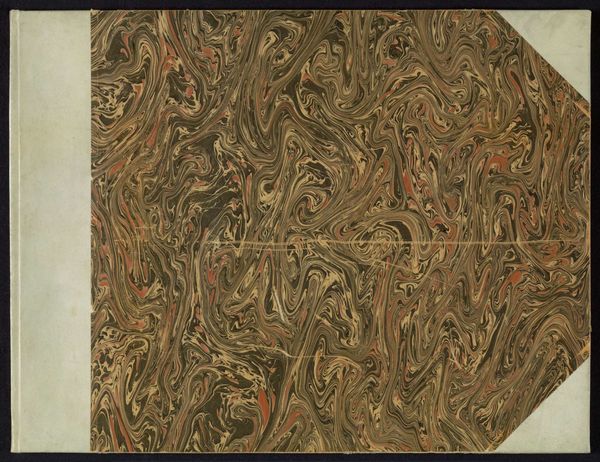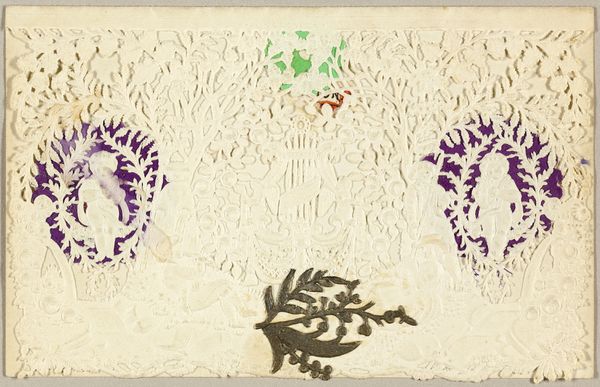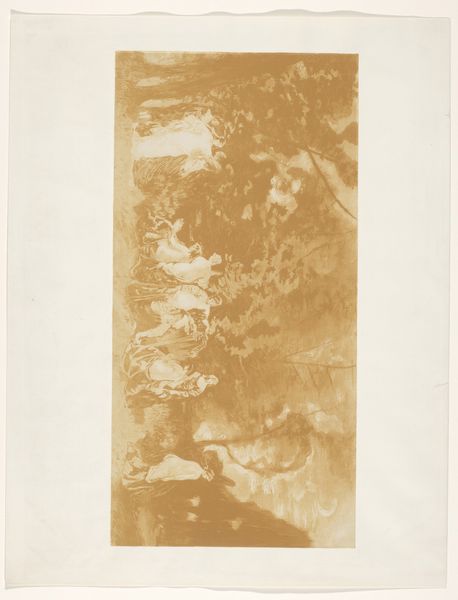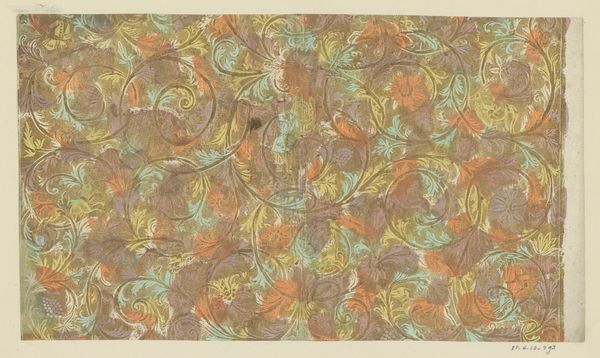
Ontwerp voor een oorkonde van de Nederlandsche Maatschappij voor Nijverheid en Handel 1874 - 1945
0:00
0:00
careladolphlioncachet
Rijksmuseum
drawing, watercolor
#
drawing
#
water colours
#
allegory
#
figuration
#
form
#
watercolor
#
line
#
symbolism
#
watercolour illustration
#
academic-art
Dimensions: height 362 mm, width 459 mm
Copyright: Rijks Museum: Open Domain
Curator: This watercolor illustration is entitled “Ontwerp voor een oorkonde van de Nederlandsche Maatschappij voor Nijverheid en Handel,” or, Design for a Charter of the Dutch Society for Industry and Trade. It’s attributed to Carel Adolph Lion Cachet and its creation falls somewhere between 1874 and 1945. Editor: It feels ethereal, almost dreamlike, doesn't it? The limited palette and flowing lines give it a sense of timelessness, despite the central inscription that anchors it to a specific institution. It’s interesting how the edges almost dissolve, emphasizing the fluidity of the watercolor. Curator: Absolutely. And it speaks to a particular moment in Dutch history, where organizations like the Nederlandsche Maatschappij voor Nijverheid en Handel played a vital role in shaping economic and social policy. Lion Cachet likely envisioned this charter design to project an image of prestige and tradition for this organization. Editor: Right. It's more than just aesthetics. I find myself drawn to the craft itself – the subtle layering of the watercolors, the texture of the paper probably used. These elements speak to the physical labor involved. There's a clear intentionality here in using specific materials to convey authority. And who was printing such things then? The act of creating official documents by hand becomes a statement about craftsmanship and worth, not mere reproduction. Curator: Yes, looking closer, we see that he has actually laid the groundwork for what would ultimately be produced for a broad circulation by professional printers. It certainly emphasizes the important social role such organizations adopted to legitimize their existence in the social and economic spheres. The organization had a profound influence over the commercial environment of the Netherlands. The piece acts almost like propaganda. Editor: Propaganda? Interesting you say that, but could the symbolism too be pointing beyond specific institutions? I’m especially curious about the allegorical figures used in the borders, perhaps even a comment on broader forces. Who is consuming these allegorical figures? How are their associations intended to function within Dutch visual culture? I suspect Cachet intentionally drew from established tropes of progress and prosperity in ways designed to resonate with existing socio-cultural expectations. Curator: Possibly, it makes you wonder how artists like Cachet viewed the societal role of visual media in codifying political rhetoric. Editor: I'm leaving with questions about how the charter contributed to its overall presentation. A deeper consideration beyond mere materials. Curator: For me, it's a reminder that material choices themselves can be potent cultural and political tools, and it causes me to reconsider the labour.
Comments
No comments
Be the first to comment and join the conversation on the ultimate creative platform.

